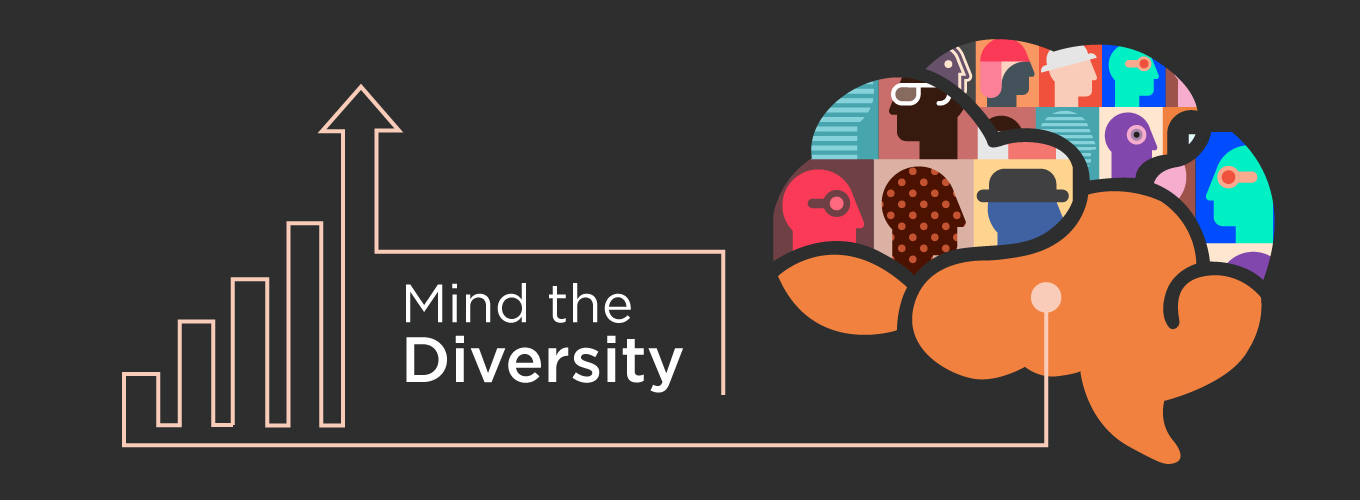cognitive diversity at workplace
Cognitive Diversity: An ‘unsung’ diversity in the workplace
Now more than ever, the increasing globalization of the world requires more interaction between people of different cultures, beliefs and backgrounds. People no longer live and work in an insular marketplace. Everyone is now part of a global economy with competition from almost every continent. For this reason, profit and non-profit organizations need diversity to be more creative and open to change. Maximizing and harnessing diversity in the workplace has become an important issue for the management today.
Diversity is generally defined as acknowledging, understanding, accepting, valuing, and celebrating differences among people with respect to age, class, ethnicity, gender, physical and mental ability, race, sexual orientation, spiritual practice etc.
Strength lies in differences, not in similarities
Over the past few years, to a greater extent, corporate leaders, consultants and organizations have been talking about a ‘neonatal’ kind of workplace diversity. Cognitive Diversity – which can also be referred to as Diversity of Thought. In India, a lot of organizations have been excelling in promoting diversity in terms of gender, culture and age. However, ‘Cognitive Diversity and Thinking Styles’ are not usually given much attention. Everyone has the potential to bring a different perspective to a company. With a workforce with different mindsets and cognitive backgrounds, organizations can build more effective teams, tackle tough tasks, and drive innovation. Removing biases from all aspects of the employee experience allows many employees with unique points of view and perspectives to grow and thrive. Making headway, this category has the potential to lead the way in redefining what diversity means in the workforce.
According to a book, ‘Diversity in the workplace’ by Bari A Williams, the author says that the cognitive diversity may comprise of introverts, extroverts and those who have a different communication style. Cognitive diversity can be heavily influenced by identity diversity through the experience of people with different racial and ethnic backgrounds, religions, gender and sexual identities. It has been proven that the interaction that happens among unique people makes an organization diverse.
While there are several cognitive dimensions that can inform a team’s cognitive diversity, Cognitive styles are psychological dimensions that represent consistencies in how individuals acquire, organize and process information, and are relatively permanent characteristics that are not necessarily associated with differences in intellectual abilities.
A theory put to test
A study conducted by Harvard Business Research has confirmed that higher cognitive diversity shows a correspondence with better performance within the team/organization. Various teams with differing levels of cognitive diversity were tested on performance. Their cognitive diversity was based on knowledge processing and perspective. Among six teams from A to F, It was found that the three teams that successfully completed the challenges within the given time (teams A, B, and C) all possessed a significant diversity in both knowledge processing and perspective. The three that took longer or failed to complete (D, E, and F) all had less diversity.
It backs this up with the results indicating that a team with a diversity of both cognitive diversity and knowledge processes completed the tasks faster. So, by enhancing or encouraging different ways of thinking in a team, a company’s or a team’s productivity can be improved. In another independent study conducted by Deloitte, it was found that cognitively and demographically diverse teams can enhance innovation by 20% and identify/reduce risks by up to 30%.
What are the collateral benefits of cognitive diversity?
Alison Paul, a leading consultant for the retail and consumer industry says “When diversity of thought is really valued, promoted, encouraged, talked about and shared, it enriches not only everyone’s experience and that person’s feeling of being part of something larger than themselves, but it also can give clues to what customers and consumers are looking for in society and help a business better fine-tune its services, products and total value proposition both as a place to work and as a set of products and services to consume.”
When an organization hires people across different cultures, backgrounds, language, there are umpteen chances of bringing positive results to the table which includes
- The creative process becomes a more combative formula and more perspectives and lots of various ideas arise.
- When employees know their diversity of thoughts and styles are appreciated, engagement and the proclivity to contribute goes up.
- With a cognitively diverse workforce, employees can more easily find those who think in their preferred format and syncopate their strengths to become more proficient.
- In many organizations, diversity of thoughts helps employees tackle new problems and challenges.
- Cognitive diversity helps increase the magnitude of new insight.
In a nutshell
Cognitive diversity of thinking style is a vital form of diversity which an organization should encourage by forming a team with different thinking styles that complement each other. It can become a powerful driving force in an organization. However, it is important to know how to incorporate it into the workplace environment. It’s easy for leaders or employees to get carried away with “thinking creatively” without actually providing realistic solutions. Employees with higher emotional quotient tend to communicate more efficiently, are able to diffuse conflicts more maturely, and can empathize with others better. With the right approach and the direction, one can encourage diversity of thought to increase work efficiency, engagement, employee satisfaction, and productivity.











